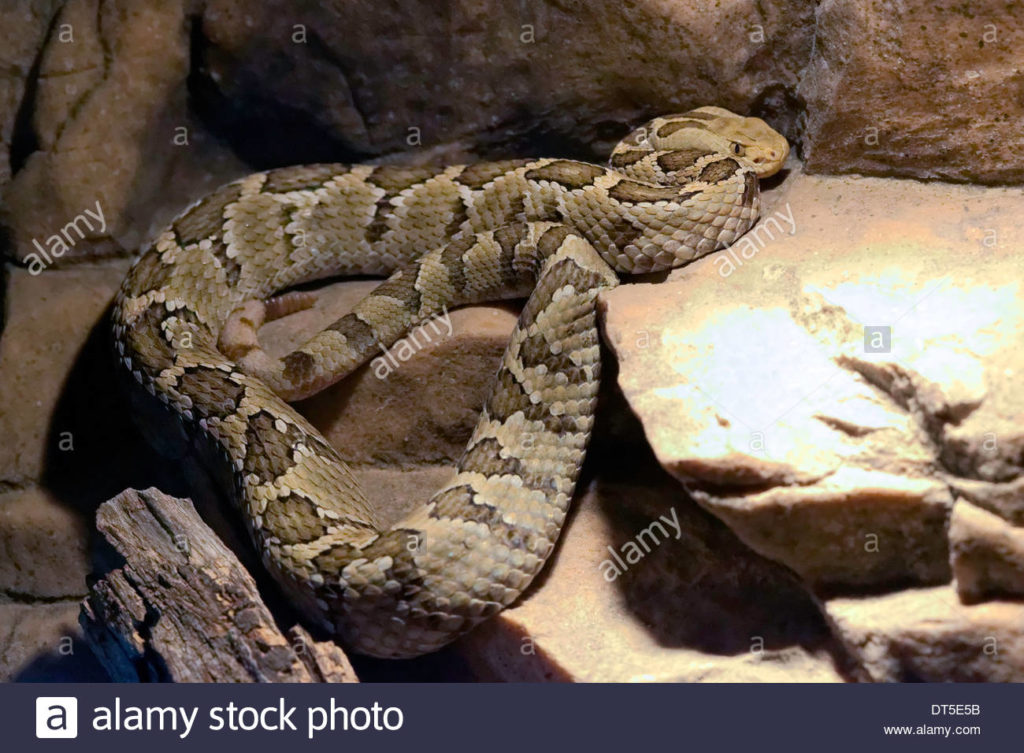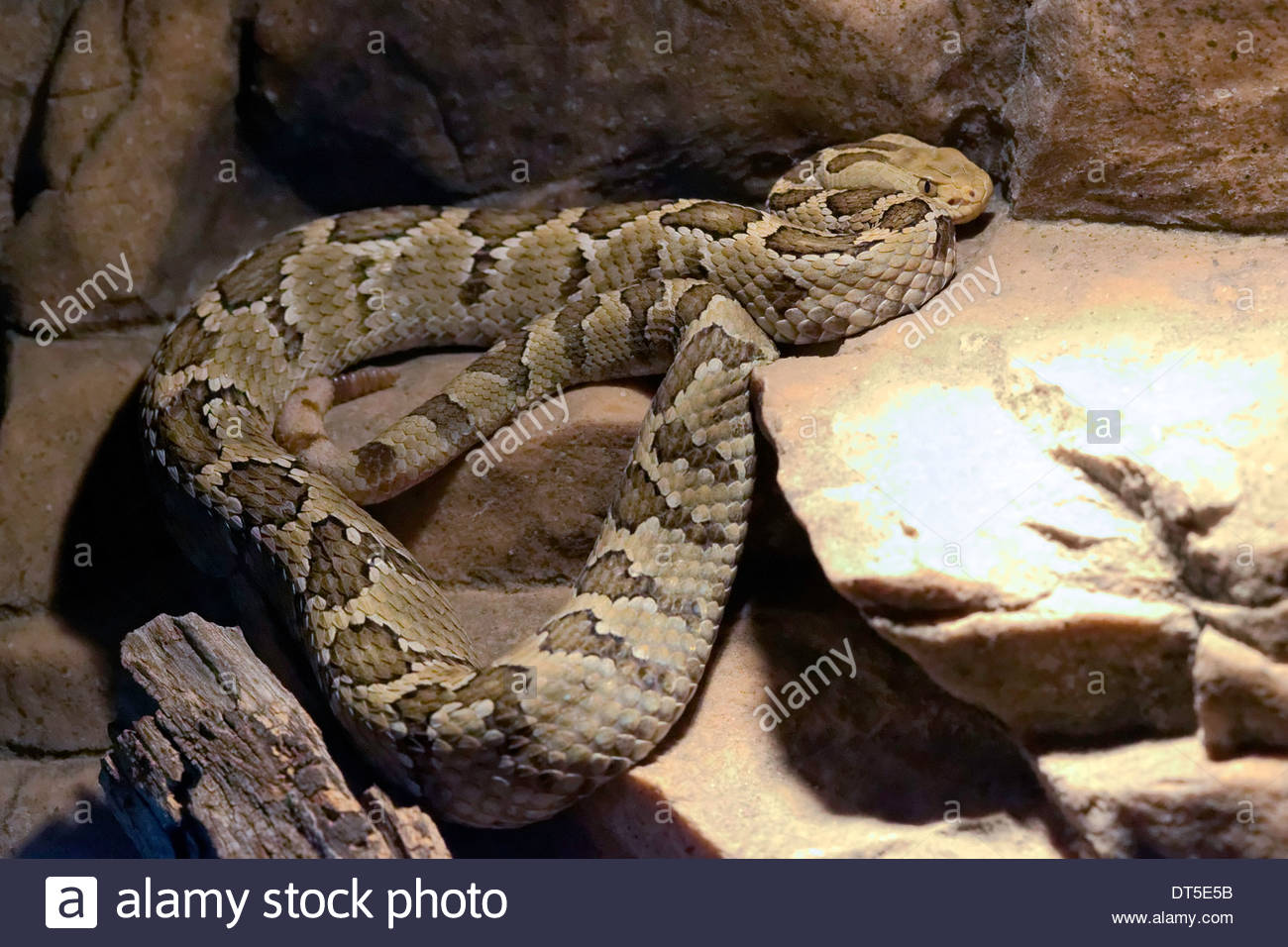ANIMAL: Mexican Pygmy Rattlesnake Crotalus ravus Type of Animal: Viper Habitat: Mountainous/highland areas, plateaus, tablelands, found at moderate to high elevations (4,890-9,800 ft above sea level) Location(s): C & S mountains in Mexico Appearance: Somewhat stout snakes, light colored w/ brown spots on scales, some individuals darker Food/Diet: Small rodents & lizards Status in Wild: Stable Conservation: Breeding from zoos, wildlife parks, & breeders Lifestyle: Solitary Additional Info: Called: Male Female Young-Snakelet Group-Solitary Weight: 7.86 oz Gestation: 3 months Life Span: 15 years Body Length: 2.24 ft Tail Length: 2.63 in Main predators are larger rattlesnakes, owls, hawks, falcons, eagles, coyotes, & dogs. Like many other rattlesnakes, females give birth to live young. Local names include vibora-cascabel pigmea-mexicana (Mexican pygmy viper/rattlesnake), colcoatl, cascabel enana (dwarf rattlesnake), vibora de cascabel (rattlesnake viper), & viborita de cascabel (little rattlesnake viper). Tends to be nocturnal & secretive. These snakes can be unpredictable. Despite being called pygmy rattlers, it’s believed they’re more closely related to crotalid rattlesnakes than to massasaugas & N. American pygmy rattlesnakes. Due to elusive nature, there is more to be learned about these snakes. Fun Fact(s): Venom hemotoxic, causing localized swelling & bruising. Due to small size, these snakes don’t deliver huge amounts of venom. However, one should always go to the hospital if bitten.

